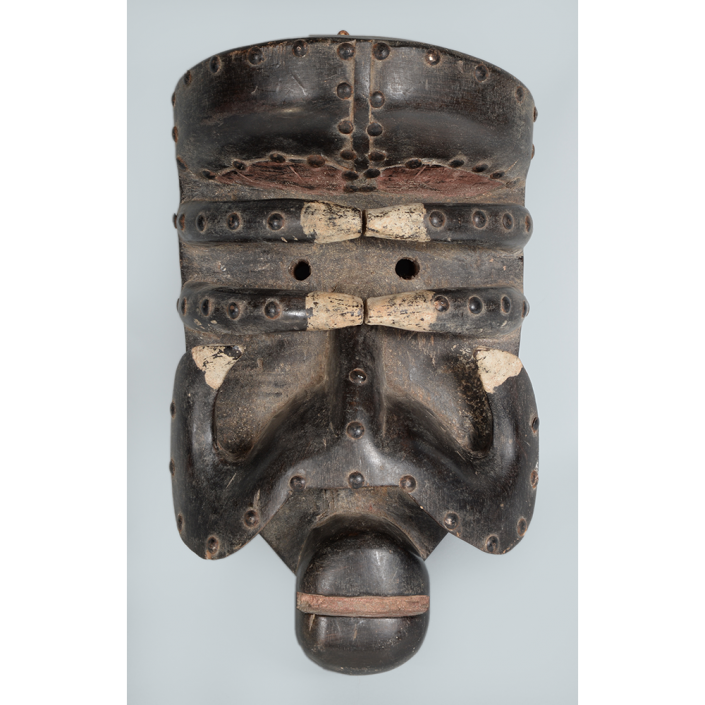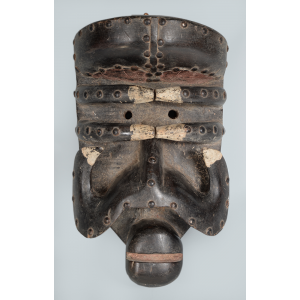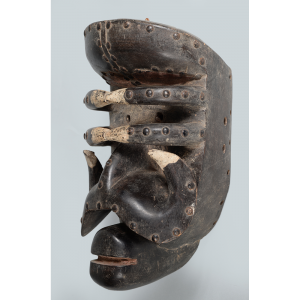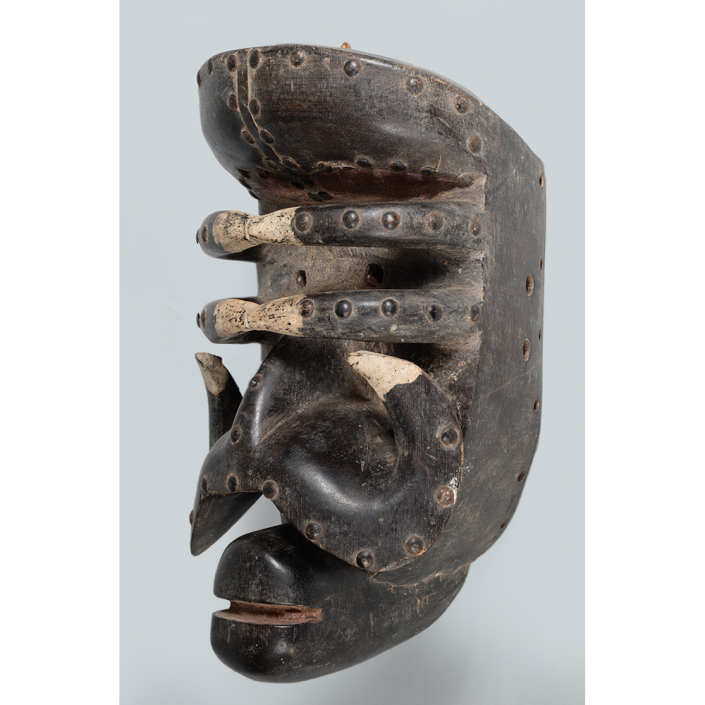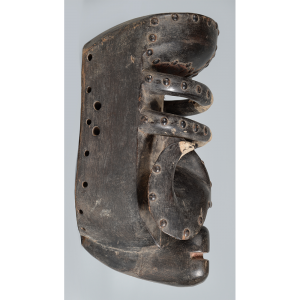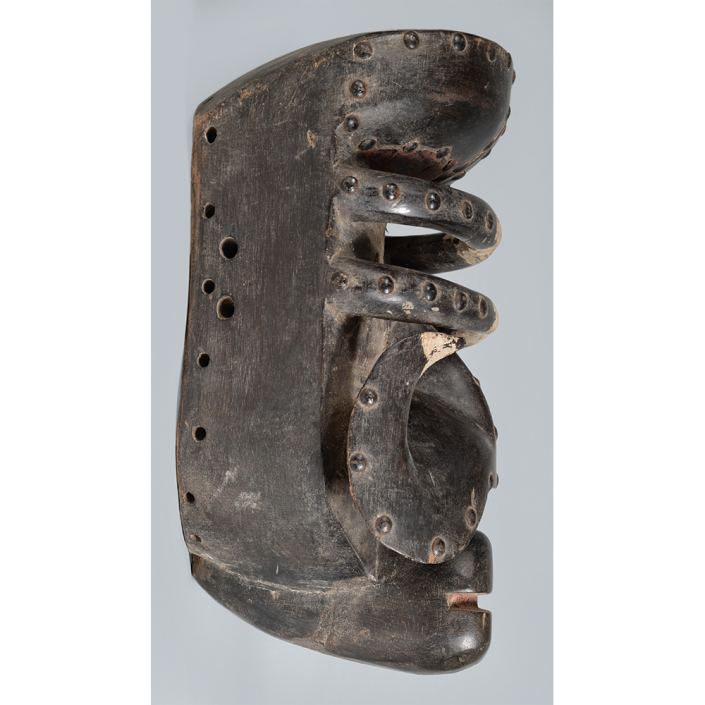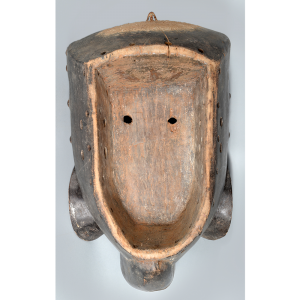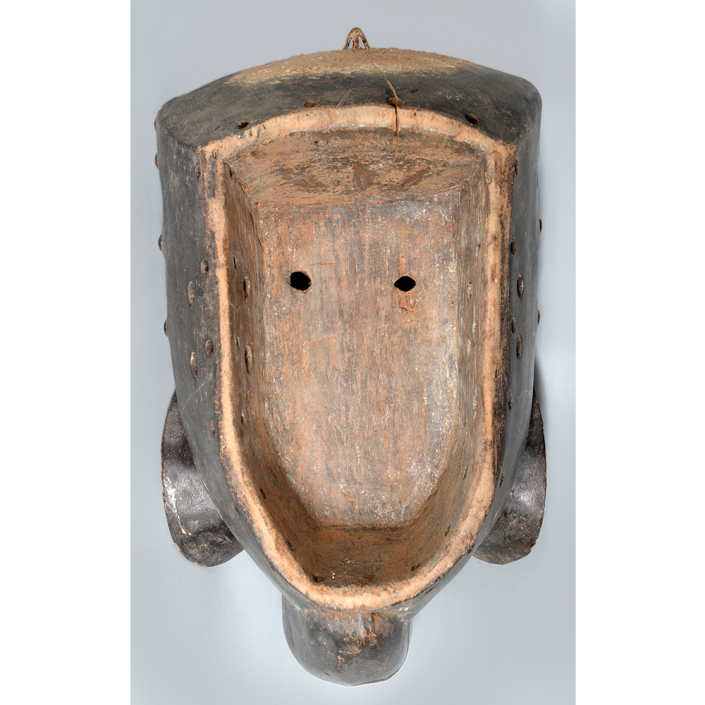TITLE: Bété N’gre Mask
TYPE: face mask
GENERAL REGION: Africa
COUNTRY: Côte d’Ivoire
ETHNICITY: Bété
DESCRIPTION: N’gre Mask
CATALOG ID: AFCI012
MAKER: Unknown
CEREMONY: Entertainment; Secret Society; Social Control; War Preparation
AGE: ca. 2000
MAIN MATERIAL: wood
OTHER MATERIALS: iron tacks; kaolin; hardware; earth
The Bété people are closely related in ethnicity to their near neighbors, the We (Guere) and Dan peoples. They live in the southwestern part of Côte d’Ivoire (Ivory Coast). The Bété were historically hunters and warriors, but today they are primarily agrarian. The Bété religion aims to harmonize the life of the people with nature and the ancestor spirits who oversee the welfare of the tribe. Most Bété maintain their animist belief system. Although they pray to a creator god, they routinely seek help through sacrifice of animals and eggs to supernatural spirits, including ancestor spirits, nature spirits, and animal spirits.
Each Bété ritual focuses on the maintenance and care of good relations with the world of ancestors, so as to assure the protection of the lineages. The religious cults give rise to numerous mask performances accompanied by music. The apprenticeship of male adolescents in dancing societies revolves around mastering the arts of musical instruments, song, and masked dance.
Bété societies have three classes of masks: kuduo masks are the rarest and most sacred, because they mediate between the living and the dead. Many villages have no kuduo masks, and none possesses more than one.
The most common type of Bété mask is the n’gre, which historically was used in a ceremony for restoring peace after a war, purifying the village of evil spirits, and presiding over dispute settlement and the punishment of wrongdoers. It is thought the mask was also used in war preparation dances to give the wearer magical protection and to terrorize potential enemies. N’gre masks can be made for dancing by adults or for training by young boys. Unlike masks in many other African societies, n’gre masks are not strictly controlled in morphology. Considerable creative variation occurs among different mask makers. The mask on display here is an adult n’gre.
For more on Bété masked dances, see Armistead P. Rood, “Bété Masked Dance: A View from Within,” 2(3) African Arts 37-43, 76 (1969).
